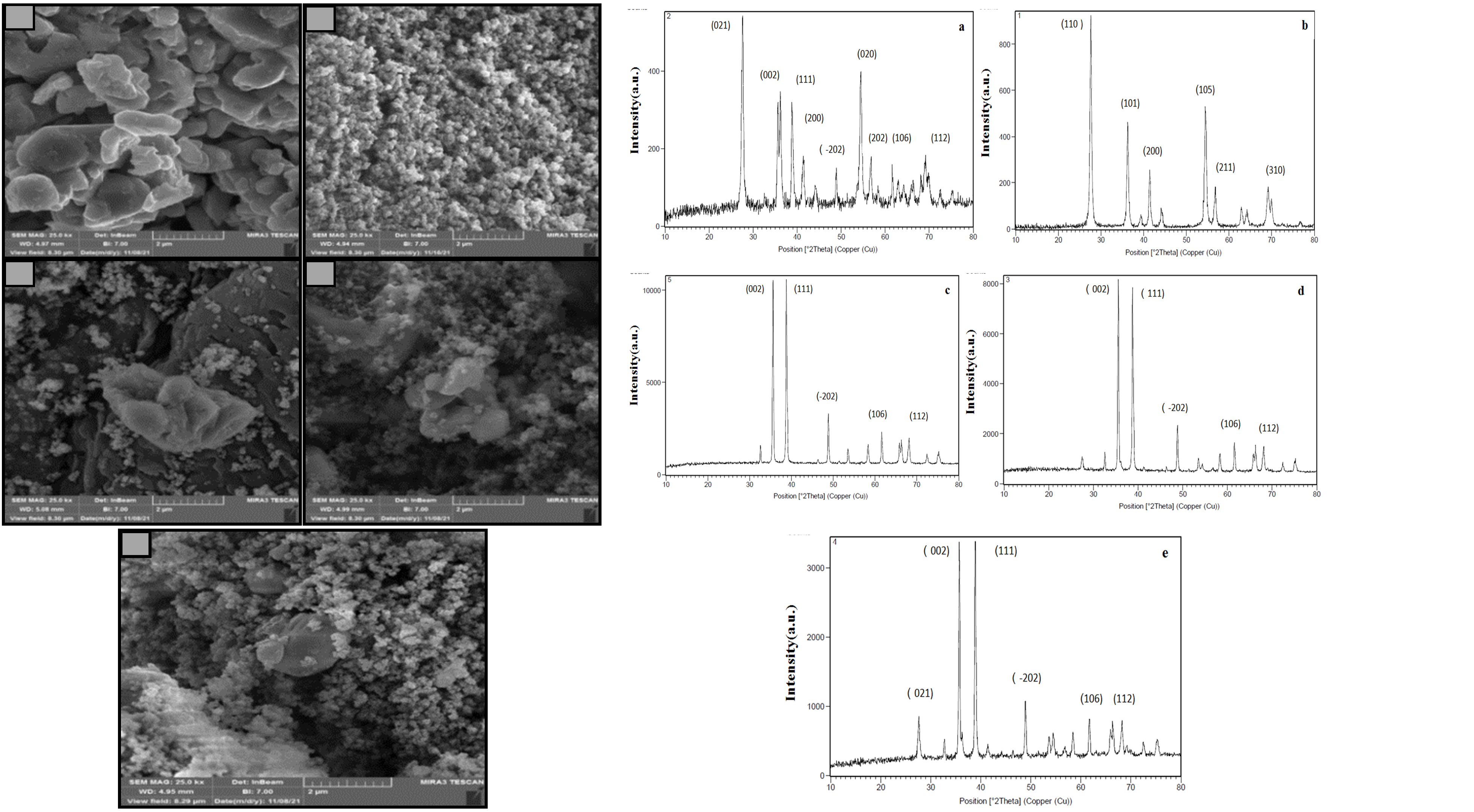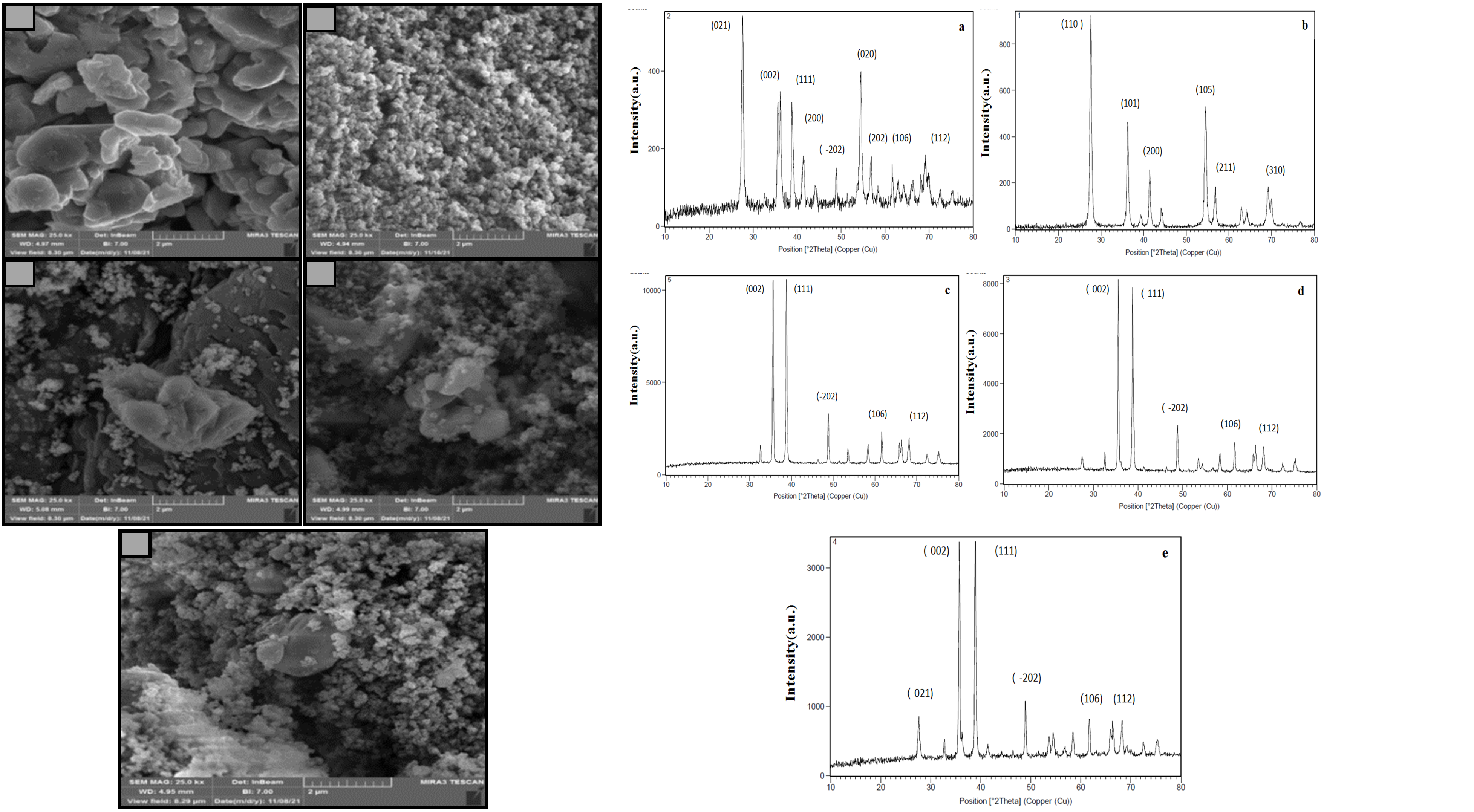Study and Characterization of Copper and Titanium Oxides Nanostructures for Some Molecular and Biological Applications
DOI:
https://doi.org/10.48048/tis.2024.7402Keywords:
Antibacterial, Molecular detection of bacteria, PCR, Synergistic effects, Copper oxide, Titanium oxide, FESEM, EDS, XRDAbstract
In this work, Copper and Titanium nanocomposites (NPs) were prepared by mixture exchange process with ratios (25, 50 and 75 % CuO-TiO2). The biological activity was studied, and it was found that the concentrations of 50 and 100 µg/mL of 50 and 75 % CuO-TiO2 were the best concentrations, Low concentrations of the nanoparticle mixture at 25 µg/mL also stimulated the growth of symbiotic bacteria. The mixture of nanoparticles was easier to prepare and more effective in inhibiting bacterial growth. biochemical test and PCR were performed to confirm the identity of the studied bacteria. While isolating the bacteria, a new type of bacteria was detected and registered in the Global Gen Bank under accession No. OP942239. Surface and structure properties have been studied using FESEM, EDS analysis, XRD and FTIR respectively. It can be seen that the size and diameter of the nanocomposite increase with the weight ratio of CuO-TiO2. The aggregated CuO-TiO2 nanostructures with different ratios were transformed gradually into a uniform spherical shape. The average size of the CuO/TiO2 composite was found to be about 32.122, 29.865 and 27.607 nm at 25, 50 and 75 % CuO-TiO2 respectively. While the mean sizes of CuO and TiO2 were 25.35 and 34.38 nm respectively. The crystalline size decreases after the ion exchange process, which could be due to the diffraction peaks being broad in all the samples of Copper Titanate at the surface. Subsequently, adding Copper particles to the TiO2 film can improve the performance of the material.
HIGHLIGHTS
The nanostructure CuO-TiO2 was created through various loading ratios. These NPs’ efficiency was calculated using a number of techniques, including FTIR, X-ray diffraction, EDS spectra, and FESEM. The observations indicate that molecular transition parameters play an essential role in determining the size, shape, and functionality of CuO- TiO2 NPs. The sharp peaks observed in the composites indicated higher crystallinity in CuO. In addition, two types of NPs have shown promising effects in inhibiting NPs aggregation and enhancing biological effects but the potential of these NPs against different bacteria may differ. Thus, further research and testing is needed to assess its efficacy and human health and environmental impact before considering its use. In conclusion, copper and titanium NPs have their distinct advantages in bacterial inhibition, and the choice between them should be based on specific conditions and environmentally friendly factors.
GRAPHICAL ABSTRACT

Downloads
Metrics
References
JP Guggenbichler, O Assadian, M Boeswald and A Kramer. Incidence and clinical implication of nosocomial infections associated with implantable biomaterials-catheters, ventilator-associated pneumonia, urinary tract infections. GMS Krankenhaushygiene Interdisziplinär 2011; 6, 234.
L Zamora-Mendoza, E Guamba, K Miño, MP Romero, A Levoyer, JF Alvarez-Barreto and F Alexis. Antimicrobial properties of plant fibers. Molecules 2022; 27, 7999.
A Mahapatra, N Padhi, D Mahapatra, M Bhatt, D Sahoo, S Jena, D Dash and N Chayani. Study of biofilm in bacteria from water pipelines. J. Clin. Diagn. Res. 2015; 12, 3456.
D Căpățînă, B Feier, O Hosu, M Tertiș and C Cristea. Analytical methods for the characterization and diagnosis of infection with Pseudomonas aeruginosa: A critical review. Anal. Chim. Acta 2022; 12, 339696.
IE Mba and EI Nweze. Nanoparticles as therapeutic options for treating multidrug-resistant bacteria: Research progress, challenges, and prospects. World J. Microbiol. Biotechnol. 2021; 37, 30.
S Chen, Y Guo, H Zhong, S Chen, J Li, Z Ge and J Tang. Synergistic antibacterial mechanism and coating application of copper/titanium dioxide nanoparticles. Chem. Eng. J. 2014; 256, 238-46.
LC Zongjie. Improved photocatalytic activity of nanoCuO-incorporatedTiO2 granules prepared by spray drying. Progr. Nat. Sci. Mater. Int. 2015; 25, 334-41.
CH Ashok, VK Rao and CC Shilpa. CuO/TiO2 metal oxide nanocomposite synthesis via room temperature ionic liquid. J. Nanomaterials Mol. Nanotechnology 2016; 5, 2-4.
H Shi, R Magaye, V Castranova and J Zhao. Titanium dioxide nanoparticles: A review of current toxicological data. Part. Fibre Toxicol. 2013; 10, 1-33.
R Laith, GG Ali and MH Younusand. Evaluation of optical and electrical properties of TiO2 thin films doped Cu ions. AIP Conf. Proc. 2019; 2201, 020001.
DLi, C Hongwei, W Xiao, L Ying, Z Shengzhi and L Dechun. Enhanced broadband nonlinear optical response of TiO2/CuO nanosheets via oxygen vacancy engineering. Nanophotonics 2021; 10, 232.
T Hao. 2014, TiO2-supported copper nanoparticles prepared via ion exchange for photocatalytic hydrogen production. Ph. D. Dissertation. The University of New South Wales, Kensington, Australia.
TA Aswad, TA Abbas and GG Ali. Effect of deposition time on optical properties of CuO thin film prepared by chemical bath deposition method. Digest J. Nanomaterials Biostructures 2021; 16, 831-8.
Q Shi, G Ping, X Wang, H Xu, J Li, J Cui, H Abroshan, H Ding and G Li. CuO/TiO2 heterojunction composites: An efficient photocatalyst for selective oxidation of methanol to methyl formate. J. Mater. Chem. A 2019; 7, 2253-60.
M Rasheed, O Alabdali and S Shihab. A new technique for solar cell parameters estimation of the single-diode model. J. Phys. Conf. 2021; 1879, 032120.
S Gharbi, R Dhahri, M Rasheed, E Dhahri, R Barille, M Rguiti, A Tozri and MR Berber. Effect of Bi substitution on nanostructural, morphologic, and electrical behaviour of nanocrystalline La1-xBixNi0.5Ti0.5O3 (x = 0 and x = 0.2) for the electrical devices. Mater. Sci. Eng. B 2021; 270, 115191.
D Bouras and M Rasheed. Comparison between CrZO and AlZO thin layers and the effect of doping on the lattice properties of zinc oxide. Opt. Quant. Electron. 2022; 54, 824.
D Bouras, M Rasheed, R Barille and MN Aldaraj. Efficiency of adding fibers during the process of filtering solution of toxic organic dyes. Opt. Mater. 2022; 131, 112725.
HN Thi, LN Thu, D Thi and LN Quang. Synthesis and characterization of nano-CuO and CuO/TiO2 photocatalysts. Adv. Nat. Sci. Nanoscience Nanotechnology 2013; 4, 025002.
M Monika, N Devi, S Sharma, S Tripathi and M Rani. Synthesis and study of TiO2/CuO core-shell nanoparticles for photovoltaic applications, materi. Mate. Today Proc. 2020; 28, 805.
AR Nuha, KE Hanaa and MK Noor. Synthesis and characterization of CuO nanoparticles and TiO2/CuO nanocomposite and using them as photocatalysts. AIP Conf. Proc. 2020; 2290, 030006.
RM El-Mekkawy, TN Almanaa, MA Yassin, G Rabie and N Saleh. Silver nanoparticles (AgNPs) biosynthesized by Aspergillus flavus KF946095; their characterization and antibacterial activity. J. Pure Appl. Microbiol. 2021; 15, 105-13.
S Kumar, G Stecher, M Li, C Knyaz and K Tamura. MEGA X: Molecular evolutionary genetics analysis across computing platforms. Mol. Biol. Evol. 2018; 35, 1547.
PE Ekane, JN Lambi and VN Beckley. Synthesis and characterization of CuO, TiO2 and CuO-TiO2 mixed oxide by a modified oxalate route. J. Appl. Chem. 2017; 3, 4518654.
Y Zeng, T Wang, S Zhang, Y Wang and Q Zhong. Sol−gel synthesis of CuO-TiO2 catalyst with high dispersion CuO species for selective catalytic oxidation. Appl. Surf. Sci. 2017; 411, 227-34.
L Dongfang, AZ Osman, KA Angaw, H Qitang, C Xiaoyun and Z Yushan. Synthesis and photocatalytic activities of a CuO/TiO2 composite catalyst using aquatic plants with accumulated copper as a template. Royal Soc. Chem. 2019; 9, 356.
Q Shi, Y Li, ES Zhan, N Ta and WJ Shen. Directed synthesis of anatase TiO2 truncated bipyramids with preferential exposure of the reactive {001} facet. CrystEngComm 2015; 17, 3376-82.
C Yu, G Li, S Kumar, H Kawasaki and R Jin. Stable Au25(SR)18/TiO2 composite nanostructure with enhanced visible light photocatalytic activity. J. Phys. Chem. Lett. 2013; 4, 2847-52.
J Edwards, B Solsona, P Landon, A Carley, A Herzing, C Kiely and G Hutchings. Direct synthesis of hydrogen peroxide from H2 and O2 using TiO2-supported Au−Pd catalysts. J. Catal. 2005; 236, 69-79.
M Azizi-Lalabadi, A Ehsani, B Divband and M Alizadeh-Sani. Antimicrobial activity of Titanium dioxide and Zinc oxide nanoparticles supported in 4A zeolite and evaluation the morphological characteristic. Sci. Rep. 2019; 9, 17439.
X Ma, S Zhou, X Xu and Q Du. Copper-containing nanoparticles: Mechanism of antimicrobial effect and application in dentistry-a narrative review. Front. Surg. 2022; 9, 905892.
R Liu, K Memarzadeh, B Chang, Y Zhang, Z Ma, RP Allaker and K Yang. Antibacterial effect of copper-bearing titanium alloy (Ti-Cu) against Streptococcus mutans and Porphyromonas gingivalis. Sci. Rep. 2016; 6, 29985.
UF Gunputh, H Le, K Lawton, A Besinis, C Tredwin and RD Handy. Antibacterial properties of silver nanoparticles grown in situ and anchored to titanium dioxide nanotubes on titanium implant against Staphylococcus aureus. Nanotoxicology 2020; 14, 97-110.
CLD Dicastillo, MG Correa, FB Martínez, C Streitt and MJ Galotto. Antimicrobial effect of titanium dioxide nanoparticles. In: M Mareș, SHE Lim, L Kok-Song and C Romeo-Teodor. Antimicrobial Resistance. IntechOpen, London, 2020.

Downloads
Published
How to Cite
Issue
Section
License
Copyright (c) 2023 Walailak University

This work is licensed under a Creative Commons Attribution-NonCommercial-NoDerivatives 4.0 International License.






